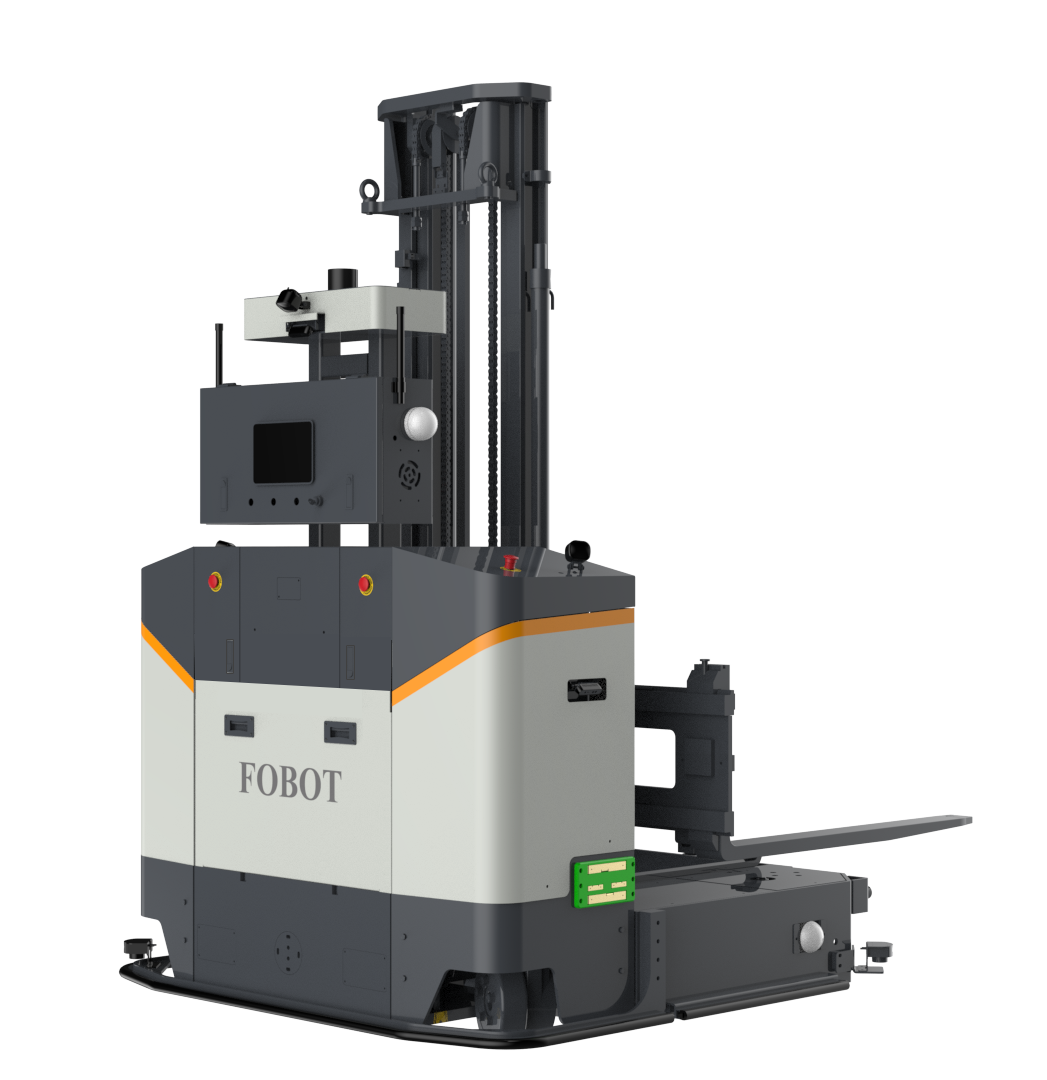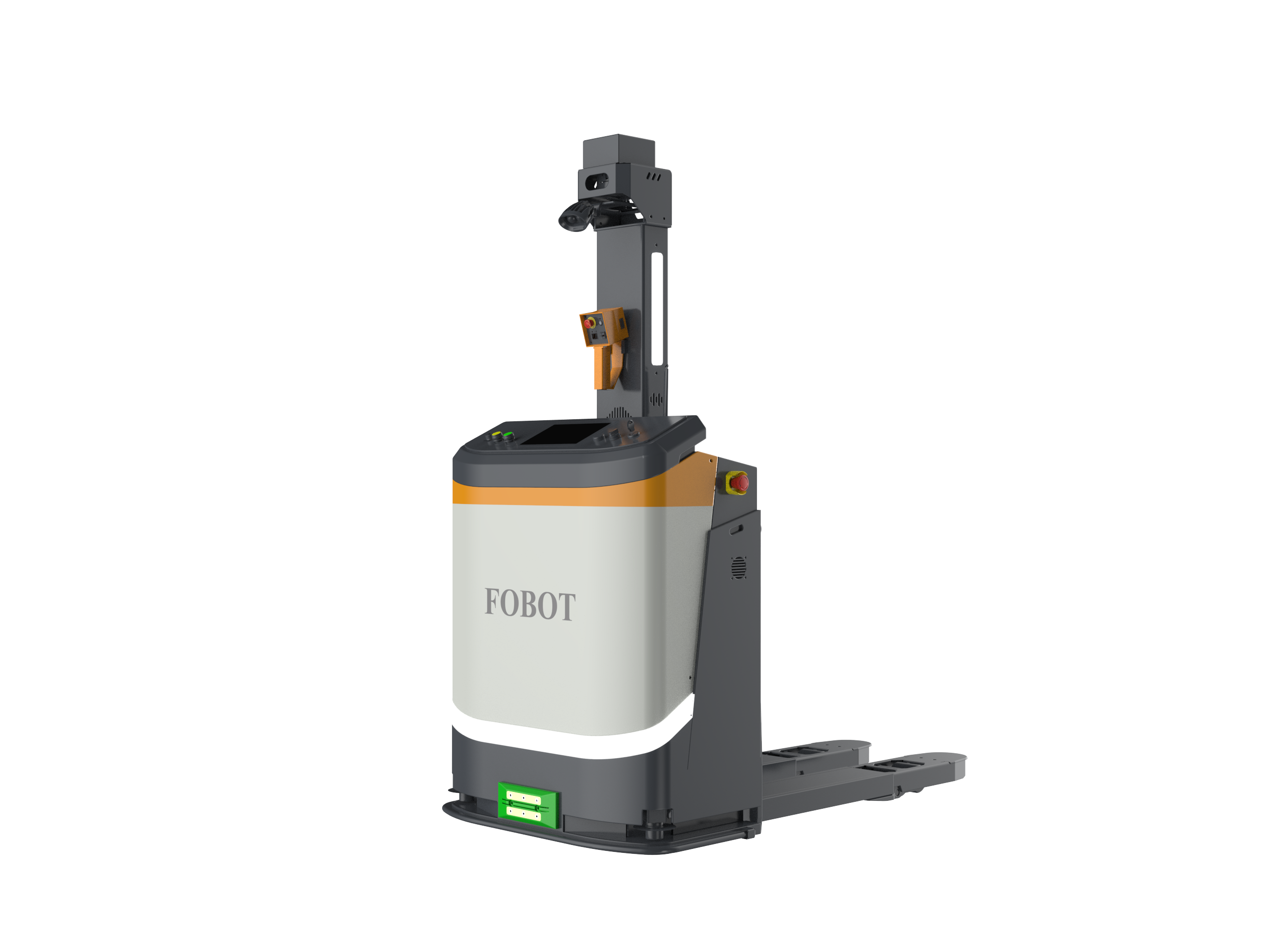The vehicles suitable for Medium-Low Shelf Warehouses
| All-direction Reach AMR | Stacker AMR | Pallet AMR |

| 
| 
|
All-direction Reach AMR:
Equipped with advanced omnidirectional wheel technology, such as Mecanum wheels, this AMR can move in any direction without turning. Its 360° maneuverability allows precise positioning in narrow aisles, a critical advantage in medium-low shelf warehouses where space is optimized. The vehicle uses LiDAR sensors and SLAM (Simultaneous Localization and Mapping) technology to navigate autonomously, creating real-time maps of the warehouse layout and avoiding obstacles dynamically.
Stacker AMR:
Designed specifically for vertical storage tasks, the Stacker AMR features a telescopic mast system capable of reaching heights up to 8 meters. It employs a combination of laser guidance and vision systems to ensure accurate pallet placement and retrieval. The AMR's stability control algorithms adjust the center of gravity dynamically during lifting operations, ensuring safe handling of loads at maximum heights.
Pallet AMR:
Optimized for horizontal transportation and pallet handling, this AMR uses a low-profile design with integrated lifting forks. It navigates using QR codes or natural feature recognition, making it highly adaptable to dynamic warehouse environments. The Pallet AMR excels in transporting goods between storage areas and production lines, ensuring seamless material flow in medium-low shelf warehouses.
Advantages of AMRs in Medium-Low Shelf Warehouses In modern logistics operations with medium-low shelf warehouses, AMRs have revolutionized material handling processes. The All-direction Reach AMR, Stacker AMR, and Pallet AMR offer unparalleled advantages over traditional forklifts, optimizing efficiency, safety, and space utilization in these specific environments. |
|
|
Advantages Over Traditional Forklifts
1. Enhanced Safety in Confined Spaces
Traditional forklifts rely on human operators, introducing risks such as collisions, improper load handling, and fatigue-related errors. In contrast, AMRs offer:
360° Obstacle Detection: Continuous monitoring systems ensure immediate stops when obstacles are detected, preventing accidents in narrow aisles.
Precision Control: Automated lifting and positioning eliminate human error, reducing the risk of load drops or shelf damage.
Ergonomic Design: By removing operators from repetitive or high-risk tasks, AMRs minimize workplace injuries.
2. Space Optimization
Medium-low shelf warehouses require efficient use of available space. AMRs deliver:
Narrow Aisle Operation: The All-direction Reach AMR and Stacker AMR can navigate aisles as narrow as 1.6 meters, increasing storage density by up to 40% compared to traditional forklifts.
Vertical Utilization: With lifting heights up to 8 meters, these AMRs fully utilize vertical storage capacity, maximizing inventory per square foot.
3. Operational Efficiency
AMRs outperform traditional forklifts in terms of speed, consistency, and uptime:
24/7 Operation: Unlike human operators, AMRs do not require breaks, shifts, or rest periods, ensuring continuous material flow.
Smart Route Planning: Real-time optimization algorithms minimize travel distances and reduce idle time, improving overall throughput.
Seamless Integration: AMRs communicate directly with Warehouse Management Systems (WMS), enabling automated order fulfillment and inventory tracking.
4. Cost Savings
While initial investments in AMRs are higher, long-term savings are significant:
Reduced Labor Costs: Elimination of operator salaries, benefits, and training expenses.
Lower Maintenance: Predictive maintenance algorithms reduce downtime and extend equipment lifespan.
Energy Efficiency: Electric-powered AMRs consume less energy compared to diesel or LPG forklifts.
5. Scalability and Flexibility
AMR fleets can adapt to changing warehouse needs:
6. Data-Driven Optimization
AMRs generate valuable operational data, including:
Performance Metrics: Track productivity, cycle times, and energy consumption for continuous improvement.
Predictive Analytics: Anticipate maintenance needs and optimize workflows based on historical data.
In medium-low shelf warehouses, the All-direction Reach AMR, Stacker AMR, and Pallet AMR AMRs offer a comprehensive solution that addresses the limitations of traditional forklifts. Their advanced technologies, safety features, and operational efficiencies make them indispensable for modern logistics operations aiming to maximize storage capacity, improve safety, and reduce costs. By leveraging these intelligent solutions, warehouses can achieve new levels of productivity and competitiveness in the global supply chain.